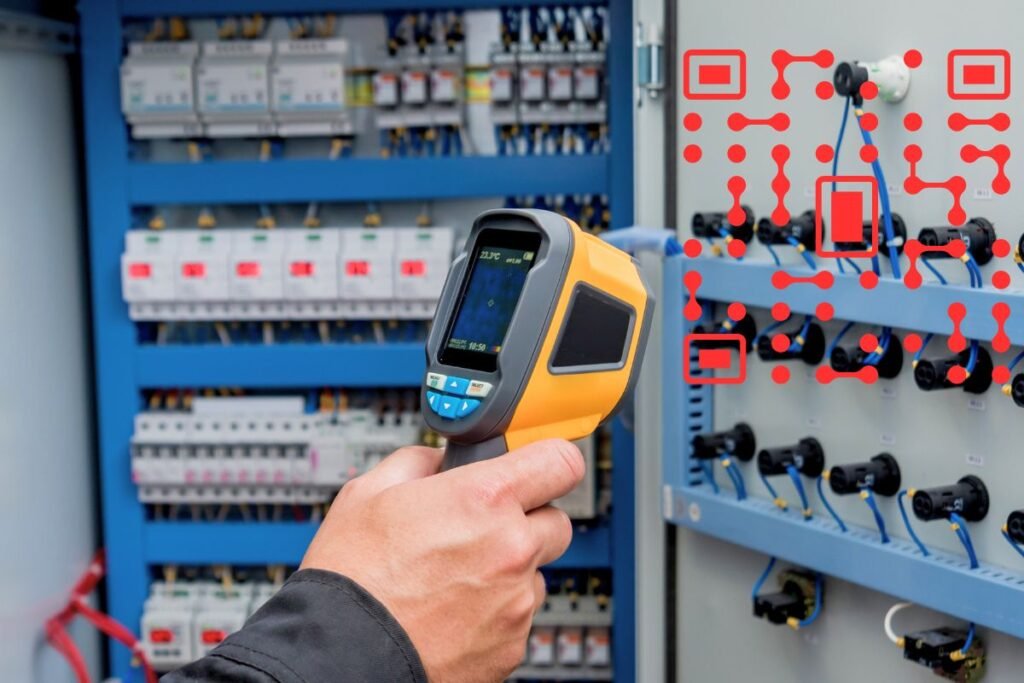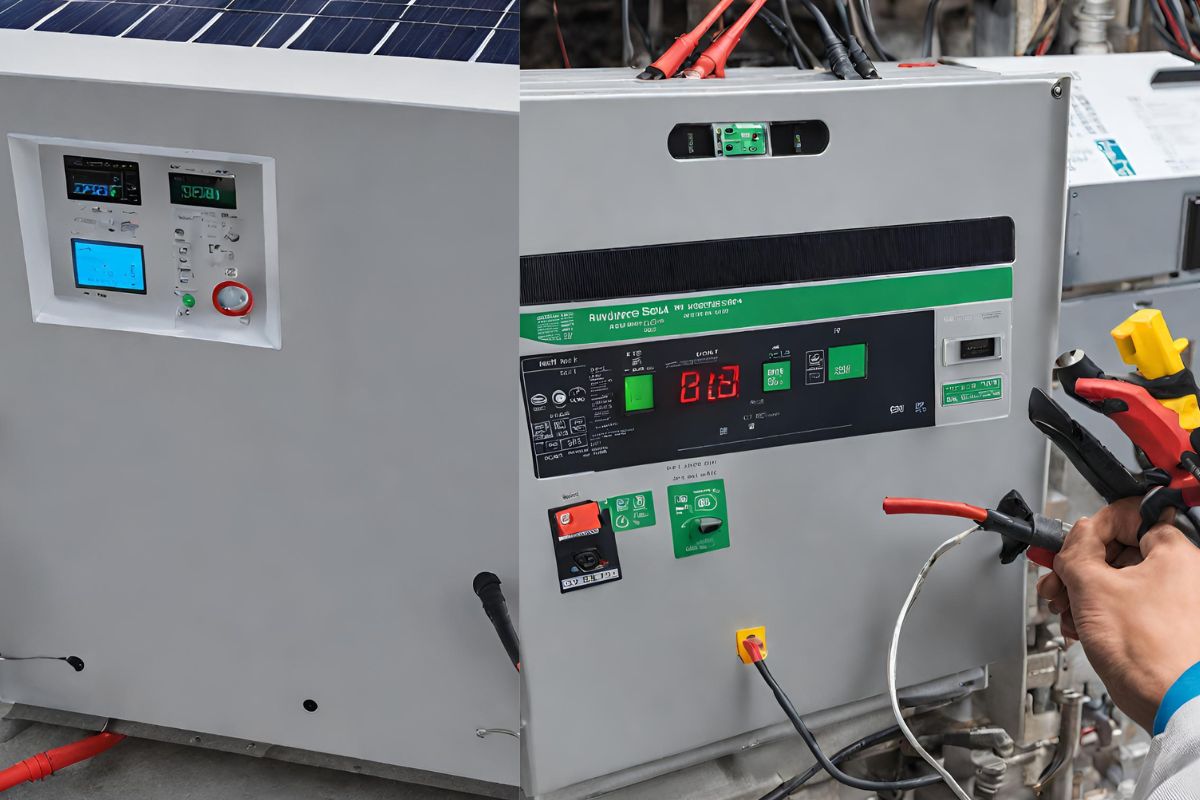Do you want to know about the solar inverter fault codes? That is what I hope to tell you in this article. That’s not all; In this post, I will also teach you how to discover solar inverter error codes, among other things.
Solar inverter errors are common once you start using the inverter, and that is the reason why you must equip yourself with some of these inverter troubleshooting tips and issue resolution.
Let’s get started.
What Are The Most Common Solar Inverter Fault Codes?
Solar inverters are mainly built to help convert DCs that come from the solar panels into suitable ACs for our electrical infrastructure.
However, like any modern product, they are prone to faults that need immediate repair. Let’s look at some common solar inverter fault codes and their ramifications.
1. Error Code E031 (Overvoltage)
This code warns that the voltage in the solar system is above safe limits.
Root causes could range from faulty solar panels to inadequately adjusted inverters, and when you ignore such warnings, most of the time, they can possibly put the entire system in danger.
2. Error Code E032 (Overcurrent)
When E032 shows up, it is like a red flag warning that the current flowing through the solar system exceeds the safe limit.
It can arise from problems such as short circuits or faulty parts. This also needs quick attention to prevent system damage.
3. E035 (Ground Fault)
This code of error suggests a problem with the solar installation’s grounding system.
Whether caused by faulty wiring or damaged infrastructure, addressing this issue is important for reducing safety risks and preventing performance degeneration.
4. Error Code E037 (DC Injection)
If E037 flashes, it indicates that an excessive amount of DC voltage has infiltrated the inverter’s AC output.
Faulty bypass diodes in solar panels or internal inverter faults may be the culprits, necessitating extensive troubleshooting to restore appropriate system operation.
5. Error Code E041 (Overtemperature)
This fault code functions as a thermometer, indicating that the inverter’s temperature has beyond the safe working range.
Inadequate ventilation, high ambient temperatures, or internal faults can all contribute to permanent damage, necessitating quick corrective action.
6. Error Code E049 (Grid Loss)
E049 is an alert that indicates that the inverter has broken its connection to the electrical grid.
Whether due to a power loss or grid connection issues, prompt investigation and correction are critical to restore appropriate performance and grid synchronization.
7. Error Code E051 (AC Voltage Out of Range)
When E051 appears, it indicates that the AC voltage output of the inverter has exceeded allowable limits.
Potential culprits include inadequate voltage regulation or variations in grid voltage, which necessitate corrective actions to maintain steady and secure functioning.
8. Error Code E052
(AC Frequency Out of Range) indicates that the inverter’s AC frequency output deviates from permitted standards.
Issues with the frequency converter or oscillations in grid frequency might be at play, emphasizing the need to ensure steady functioning.
It is important to refer to the manufacturer’s specific documents for accurate interpretation and solution of fault codes since they may differ according to the inverter category and company.
Resolving these problems is important for ensuring your solar power system’s efficiency, safety, and longevity.
How Can I Interpret Solar Inverter Fault Codes?
Interpreting solar inverter error codes is critical for the longevity and dependability of your solar power system.
Solar fault codes may differ from one solar to the next; the essential point is that you understand how to traverse fault codes for the solar inverter you are working on.
Consult the user manual
Begin by reviewing the user manual or paperwork supplied by the manufacturer of your solar inverter.
This manual usually includes a complete list of trouble codes and thorough explanations of their meanings and potential causes.
If you need help finding the hardcopy manual, visit the manufacturer’s website for online information.
Identify the defect number
When a defect occurs, your solar inverter will show a specific alphanumeric number, such as “E031” or “E049.” Take note of the code that appears on the inverter’s interface or monitor system.
This code is a diagnostic tool that can help you identify the underlying problem.
Understand the meaning
Use the information in the manual to determine the meaning of the fault code you’ve discovered.
Each code refers to a specific problem or malfunction in the solar power system. Common fault codes include overvoltage signals, overcurrent, ground faults, and temperature abnormalities.
Consider Environmental issues
Look into any environmental issues that may be contributing to the problem.
Over-temperature problems can arise in hot weather or when the inverter is exposed to direct sunlight for an extended length of time.
Understanding these external effects might help you better analyze the error code.
Inspect System Parts:
1. Solar panels, wiring, connectors, and electrical grid connection.
2. Check for signs of damage, corrosion, loose connections, or other factors causing the problem.
3. Consider any spots highlighted in the user manual as possible areas of concern.
Review Historical data
If your solar inverter has monitoring capabilities, examine historical data to determine any patterns or trends related with the problem incidence.
Look for performance swings or reoccurring difficulties to help you determine the main cause of the problem.
Troubleshoot and fix the problem
Based on your interpretation of the fault code and system analysis, take the necessary steps to troubleshoot and fix the underlying issue.
This might include repairing or replacing damaged components, altering system settings, or getting expert assistance.
Monitor for Resolution
After remedial action has been taken, monitor your solar power system for improvement. Watch the inverter’s interface or monitoring system for new fault codes.
If the problem persists or reoccurs, reevaluate your troubleshooting attempts and consider obtaining additional assistance from a certified specialist.
The handbook should be your best friend during this process; by following these steps and using the information supplied in the user manual, you will be able to correctly read solar inverter fault codes and take necessary action to preserve the efficiency and dependability of your solar energy system.
Always prioritize safety and seek expert help if necessary.
Can I Reset Solar Inverter Fault Codes on My Own?
Resetting solar inverter fault codes on your own may be a simple procedure; before I became a technical guy, I once tried this, and it took me about three days to even re-position the parts in their normal positions.
However, if you know you are technically inclined, you can try it, and remember it requires prudence and a comprehensive understanding.
Here’s a guide to help you manage the procedure better and effectively:
Check the user manual: Begin by reading the user manual or documentation given by the manufacturer.
Look for information on how to reset fault codes relevant to your solar inverter model. The guidebook should detail the required processes and safety precautions to take.
Understand the Cause: Before attempting to reset, trace out the root cause of the error code first.
This check is important to do before you start, such as poor wiring, component problems, or environmental conditions. Addressing the root cause is critical for preventing the error from repeating.
Prioritize Safety: Safety should always come first when dealing with electrical systems. Before performing any repair or reset procedures, ensure the solar inverter is securely turned off.
To avoid electric shock and other risks, follow all safety recommendations in the user handbook.
Perform the Reset Procedure: If the user handbook includes instructions for resetting fault codes, carefully follow them.
This might include pressing certain buttons or switches on the inverter’s control panel, utilizing a remote monitoring interface, or following a set of instructions in the manual.
Pay special attention to detail and carefully follow each step to avoid mistakes.
A quick response to resolving your inverter problems will go a long way to really help the inverter function well.
Seek professional help if necessary. For complex or possibly hazardous issues, or if you need help with how to continue, consult a skilled solar installation expert.
They can offer experienced advice, precisely identify the problem, and securely carry out any necessary repairs or resets.
Finally, while certain minor fault codes may be reset on your own using manufacturer recommendations, it is critical to exercise caution, prioritize safety, and seek expert assistance if necessary.
Following these suggestions will allow you to reset solar inverter error codes efficiently while maintaining the efficiency and dependability of your solar power system.
Final Thought
Now that I’ve established the usual solar inverter problem codes, you should be aware that the operation of your solar inverter is affected by this maintenance advice.
Regularly examine solar panels for dirt or damage and clean as needed. Monitor the inverter displays for trouble codes and consult the handbook for interpretation.
Check wiring and connections for signs of wear or corrosion and rectify any faults as soon as possible. To ensure maximum sunshine exposure, keep foliage clipped around panels.
Perform periodic system checks and consider professional inspections on a yearly basis. With this, you can simply prevent inverter error code issues.
Stay up to date on manufacturer-issued system upgrades and recalls. With appropriate maintenance, your solar inverter can run more effectively, improving energy output and extending its lifespan.
Related Article:



